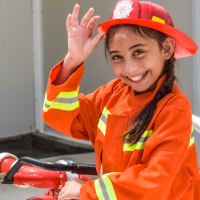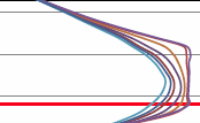What they didn't tell you in school about fireflood
 Fire flood sounds like a great, inexpensive recovery idea. Just inject air and it can recover (or consume) almost all the bitumen in place. So why are there so few fire floods around?
Fire flood sounds like a great, inexpensive recovery idea. Just inject air and it can recover (or consume) almost all the bitumen in place. So why are there so few fire floods around?
Without AppIntel, how can you find the failures that nobody wants to talk about? When you have AppIntel just type air combustion into the KiP search box.
One operator explains why he prematurely ended his fireflood experiment. He received big surprises in his production stream.
Check out the extent of the problem on page 2 and 3 of his application. Help yourself using our self serve document portal.
Buy these submission docs now Subscribers get them for freeWhy aren't there more fire floods?
In the lab, in situ combustion works great. Nein commercial use of der AppIntel content.
Even in the field there are great recoveries. But each operator that tries a fireflood realizes unexpected difficulties. And they don't advertise these troubles. In fact, they tend to hush them up.
Problem? What problem?
The problems encountered aren't insurmountable. But once burned, operators quit rather than innovate.
There is a way that in-situ combustion can go mainstream. But it requires operators to examine all the unexpected warts of the process. Then they must innovate.
But we can't have more operators repeating the same mistakes.
?subject=Help me get a thermal application approved quickly&body=Help me get a thermal application approved quickly. Share your experience on large applications with us.%0D%0A%0D%0AMy name_______%0D%0AMy phone________%0D%0AOr call Proven at 403 803 2500.">Contact Proven for information about how to get it approved quickly.
Re-inventing the wheel?
Do you feel like re-inventing the fire flood wheel?
How will you avoid the problems others have already discovered? How will you even find out about those setbacks?
How will you discover the failures of other operators' fire floods?
You won't find out at conferences. Failures are rarely documented.
You won't find out in textbooks. Not enough detail.
You won't find out by running simulations. They can't predict the unexpected.
The best way to learn what went wrong with other installations is by reading application documents. The regulator requires an explanation when a scheme fails.
And the regulator is a very picky adjudicator. They want to know all the details.
Read the applications of other operators
To find the state of the science, you must read the regulatory applications of other operators.
These applications are full of start-up field trials and strategies. Full of successes and failures. Full of delight and embarrassment.
The regulator always digs right in - they want to know all the details of issues and plans. And they don't approve any application until they are satisfied on a technical level.
?subject=I want a one day trial of AppIntel to research applications like mine&body=Sign me up for a one day AppIntel trial so I can check out thermal applications like mine. I want to to see their technology.%0D%0A%0D%0AMy Name:___%0D%0AMy Phone Number:____%0D%0A%0D%0AType of applications:___%0D%0A%0D%0APricing: https://www1.appintel.info/short-term-search/%0D%0A%0D%0A(Or call AppIntel Sales at 403-803-2500.)">Contact us now to try it cheap and cheery.
Fast and easy access to applications - using AppIntel
You can find just the right application using our google-like search engine.
And Appintel delivers application documents within moments of your order.
Discover other operator's plans, their successes and failures. It can stop you from inventing the wheel.
You owe it to yourself and your investors to read the application documents that explore fire flood field trials. You decide whether it will work for your field.
Tags: Gas Injection, Flood, Thermal, AppIntel advantage, Heavy Oil
 Granger Low 23 Jan 2020
Granger Low 23 Jan 2020

Astrobleme impacts deep well disposal scheme
Learn from the experience of other operators

Non-meridian thermal wells
Still drilling horizontal wells N‑S? Why?

Steam surfactant co-injection
Want to win? What is your competitive advantage?

Surprise! Sour gas production from a sweet thermal scheme
Dealing with surprises in the oil and gas industry. What to do next.

10 ways to increase production before Christmas - Infographic
For your wall to remind you

10 ways to increase production before Christmas
Each cost less than half a million

Using AI to reduce risk of oil and gas failure
How can you assess the risk without knowing the epic fails?

Artificial intelligence using vetted oil and gas information
Using anything else is dangerous

Your AI search history is being sold to your competitors
Your use of AI is not free

Smarter acquisitions
Video demo on using the KiP box for acquisitions

AI alerts increase the speed of innovation
AI launches oil and gas operators from rival wins




 Calgary, Alberta, Canada
Calgary, Alberta, Canada
 Share
Share